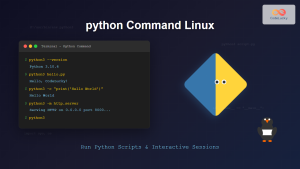The isatty() method is a handy tool in Python for determining whether a file stream is connected to an interactive terminal. This method proves useful when you need to tailor your program's behavior based on whether it's running in an interactive environment, such as a terminal, or in a non-interactive environment, like a batch script.
Understanding the Purpose of isatty()
The isatty() method is a powerful tool when you want to adapt your program's behavior based on the type of environment it's running in. Here's why this function is valuable:
- Interactive vs. Non-interactive environments: Interactive environments, such as terminal windows, provide direct user input and feedback. Non-interactive environments, like batch scripts, are designed to run without user interaction.
- Adapting program behavior: The
isatty()method allows you to determine the type of environment and adjust program behavior accordingly. You might want to disable certain features in batch scripts or provide a more verbose output when running interactively. - Ensuring compatibility: Different operating systems and environments handle file streams differently. The
isatty()method offers a way to handle these differences consistently.
Syntax and Parameters
file_object.isatty()
Parameters:
The isatty() method doesn't accept any parameters. It operates on the file_object it's called on.
Return Value:
The isatty() method returns a boolean value:
- True: If the file stream is connected to an interactive terminal.
- False: If the file stream is not connected to an interactive terminal.
Practical Examples
Example 1: Detecting Interactive Mode
This code snippet demonstrates how to use isatty() to determine whether a program is running in an interactive terminal.
import sys
if sys.stdin.isatty():
print("You are running this program in an interactive environment.")
else:
print("This program is running in a non-interactive environment.")
Output (When running in a terminal):
You are running this program in an interactive environment.
Output (When running a Python script from a batch file):
This program is running in a non-interactive environment.
Example 2: Customizing Output Based on Environment
This example shows how to modify output based on the environment.
import sys
if sys.stdout.isatty():
print("Welcome to our interactive program! Let's get started.")
else:
print("Running in non-interactive mode. Output is being redirected.")
Output (When running in a terminal):
Welcome to our interactive program! Let's get started.
Output (When running a Python script from a batch file):
Running in non-interactive mode. Output is being redirected.
Potential Pitfalls and Common Mistakes
- Understanding stdin, stdout, and stderr: Make sure you're applying
isatty()to the correct file object.sys.stdinrepresents the standard input,sys.stdoutis the standard output, andsys.stderris the standard error stream. - Cross-platform compatibility: The behavior of
isatty()might vary slightly across different operating systems, particularly when dealing with redirected input or output.
Conclusion
The isatty() method is a valuable tool for writing robust Python programs that can adapt their behavior based on the environment they're running in. By checking for interactive environments, you can customize user experiences, improve program efficiency, and ensure compatibility across different platforms.


